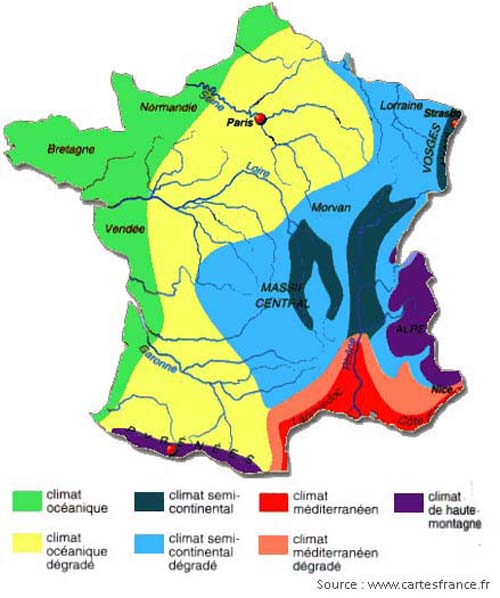
French genetics
for cattle, sheep
and goat industries
-
Languages :







- Subscribe to the newsletter RSS
-
- Home >
- France, livestock country >
- Remarkable biodiversity >
- French regional diversity
Remarkable biodiversity
French regional diversity

Variety of breeds and variety of zootechnical traits
France hosts a great variety of native ruminant livestock breeds (over 70 cattle, sheep and goat breeds). This broad panel of breeds offers a source of biodiversity featuring outstanding zootechnical traits. This natural heritage is a major asset for meeting the broad-ranging needs of livestock farmers according to production setting and agrifood sub-sectors according to market setting.
Within each breed family ― cattle, sheep or goat ― the panel of breeds on offer means that each livestock farmer can select the "genetic composite" best suited to their production system and business objectives according to the soil and climate conditions they have to deal with and the market channel they are targeting.
The traits of these breeds have been forged by a long-standing selection tradition, and are intimately tied to the some of effects of the local environment in which they have been created and developed, ultimately becoming world-renowned phenotypes.
Variety of regional production areas
The genetic diversity found in French livestock is a reflection of the diversity in France’s myriad local regions. These different environmental conditions, combined with successive waves of political and economic history (British influences in the north, central-European in the east, and Mediterranean across the south) ― all materialized through the efforts of grassroots livestock breeders ― have naturally and progressively forged the remarkable biodiversity of the French national herd stocks.
On the westernmost side of Europe, France hosts the end of the great European Plain in the north-west, while at the same time bordering the Alpine ranges in the south-east. France also features two even older, heavily eroded upland massifs cleaved with valleys ― Brittany and, of course, the Massif Central ― that boundary coastal plains or lowland ranges (Aquitaine, the Midi-Pyrénées and the Languedoc).

This configuration naturally gives way to a variety of different soils and landforms, from the mountainous heights of the Alps and the Pyrenees to the limestone plateaus called Causses, and the low-lying plains of the Paris basin to the valleys of the Charolais hills…
This diversity is compounded by a variety of different climate zones. The ocean climate lends the coastal regions a temperate climate with plenty of rain creating ideal conditions for forage and croplands. South-western France (Aquitaine) is conducive to a broad variety of farmed produce, whereas south-eastern France is unmistakeably pure Mediterranean.
The Alps and Pyrenees, as younger mountain ranges, are characterized by deep-set boxed-in valleys and high-altitude summer pastureland rising in stages from 1600 to 2500 metres asl. The plateaux and upland ranges of eastern France enjoy a more continental climate, where the lowland areas are mainly used for cropland while forage production (essentially grass) takes over as soon as the land begins to climb (Jura).

Key figures
- 549,190 km² area (mainland France)
- 292,800 km² (53.3%) of utilized agricultural land
- 184,000 km² (33.5%) of cropland
- 146,100 km² (26.6 %) dedicated to grazing livestock
- 99,100 km² (18.1%) of permanent grassland
- 47,000 km² of forage crops
- 6 mountain ranges: the Alps, the Pyrenees, the Massif Central, the Jura, the Vosges, and the Armorican Massif
- 3 seas and 1 ocean: the North Sea, the Channel, the Mediterranean Sea, and the Atlantic Ocean
- 5 major rivers: the Seine, the Loire, the Garonne, the Rhône and the Rhine
- 2 major drainage basins: the Paris Basin and the Aquitaine Basin
- 4 main climates: oceanic, semi-continental, Mediterranean, and high-altitude


































